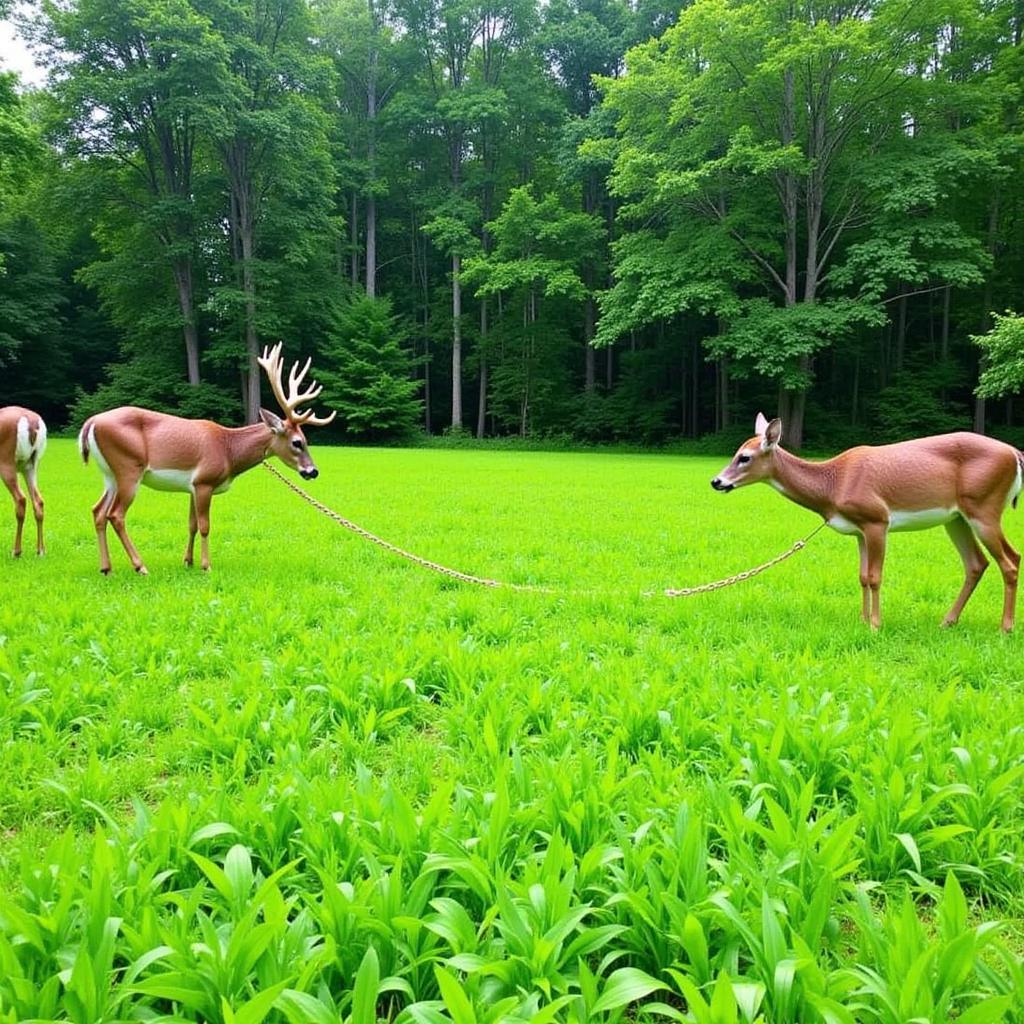A Diy Food Plot Drag is an essential tool for establishing and maintaining successful food plots, especially for attracting wildlife. It’s a cost-effective way to create a thriving food source, and this article will guide you through everything you need to know to build and use your own. We’ll explore the benefits, materials, construction techniques, and best practices to ensure your food plot thrives. food plot drag helps to distribute the seeds evenly and create a suitable environment for germination.
Why Choose a DIY Food Plot Drag?
Creating a food plot can be a significant investment. However, a homemade food plot drag offers a budget-friendly solution without compromising effectiveness. Building your own allows customization to perfectly suit your terrain, equipment, and specific planting needs. This tailored approach can result in a more efficient and productive food plot.
Building a DIY food plot drag can save you a considerable amount of money compared to purchasing a commercially manufactured one. This allows you to allocate your resources towards other essential aspects of your food plot, such as high-quality seeds or soil amendments. Plus, it’s a rewarding project that gives you complete control over the final product.
Gathering Your Materials: Building Your Own Drag
Constructing a DIY food plot drag is a straightforward process. You’ll need some readily available materials: a sturdy frame (old bed frames, metal gates, or heavy-duty pallets work well), chain link fencing, a length of chain or rope for towing, and a weight (like concrete blocks or a filled barrel) if needed.
The frame provides the structure for your drag. Chain link fencing is ideal for covering the frame, allowing it to level the ground and distribute seeds effectively. The chain or rope attaches to your ATV or tractor for towing, and the weight helps press seeds into the soil for better contact.
Step-by-Step Construction Guide
- Prepare the frame: Ensure the frame is sturdy and free of any sharp edges that could damage your equipment or yourself.
- Attach the chain link fencing: Secure the fencing to the frame using zip ties, wire, or bolts, ensuring a taut fit.
- Attach the towing chain/rope: Securely fasten the towing chain or rope to a strong point on the frame.
- Add weight (if necessary): If your soil is particularly hard or you’re using larger seeds, attach weight to the top of the drag for better seed-to-soil contact.
Using Your Food Plot Drag Effectively
Once your homemade food plot drag is assembled, using it is simple. After preparing your food plot area by clearing debris and tilling the soil, tow the drag over the area to level the ground and cover the seeds. Multiple passes may be needed for optimal results.
Tips and Tricks for Success
- Consider the size of your plot: A larger plot may require a larger, heavier drag for efficient coverage.
- Match the weight to your soil type: Harder soils benefit from added weight, while lighter soils may not require as much.
- Adjust your dragging speed: A slower speed provides better seed coverage and ground leveling.
- Regular maintenance: Inspect your drag after each use for any damage and make necessary repairs.
Dr. Emily Carter, a wildlife biologist specializing in habitat management, emphasizes the importance of a well-prepared seedbed: “A food plot drag is an invaluable tool for creating optimal seed-to-soil contact, a key factor for successful germination and establishment.”
Conclusion
Building a DIY food plot drag is a rewarding and cost-effective way to improve your food plot success. With readily available materials and a simple construction process, you can create a customized tool perfectly suited to your needs. By following the tips and guidelines outlined in this article, you’ll be well on your way to creating a thriving food plot that attracts wildlife and enhances your hunting experience. A food plot drag can truly make all the difference.
 Thriving Food Plot After Dragging
Thriving Food Plot After Dragging
FAQ
- What materials are needed to build a DIY food plot drag?
- What are the benefits of building my own food plot drag?
- How do I use a food plot drag effectively?
- What are some common mistakes to avoid when using a food plot drag?
- Can I use a food plot drag on any type of terrain?
- What are some alternatives to using a food plot drag?
- How do I maintain my DIY food plot drag?
For more information on food plots, check out our articles on creating a budget-friendly food plot and choosing the right seeds for your region.
Need help with your DIY food plot drag? Contact us at Phone Number: 02437655121, Email: minacones@gmail.com or visit us at 3PGH+8R9, ĐT70A, thôn Trung, Bắc Từ Liêm, Hà Nội, Việt Nam. We have a 24/7 customer service team.